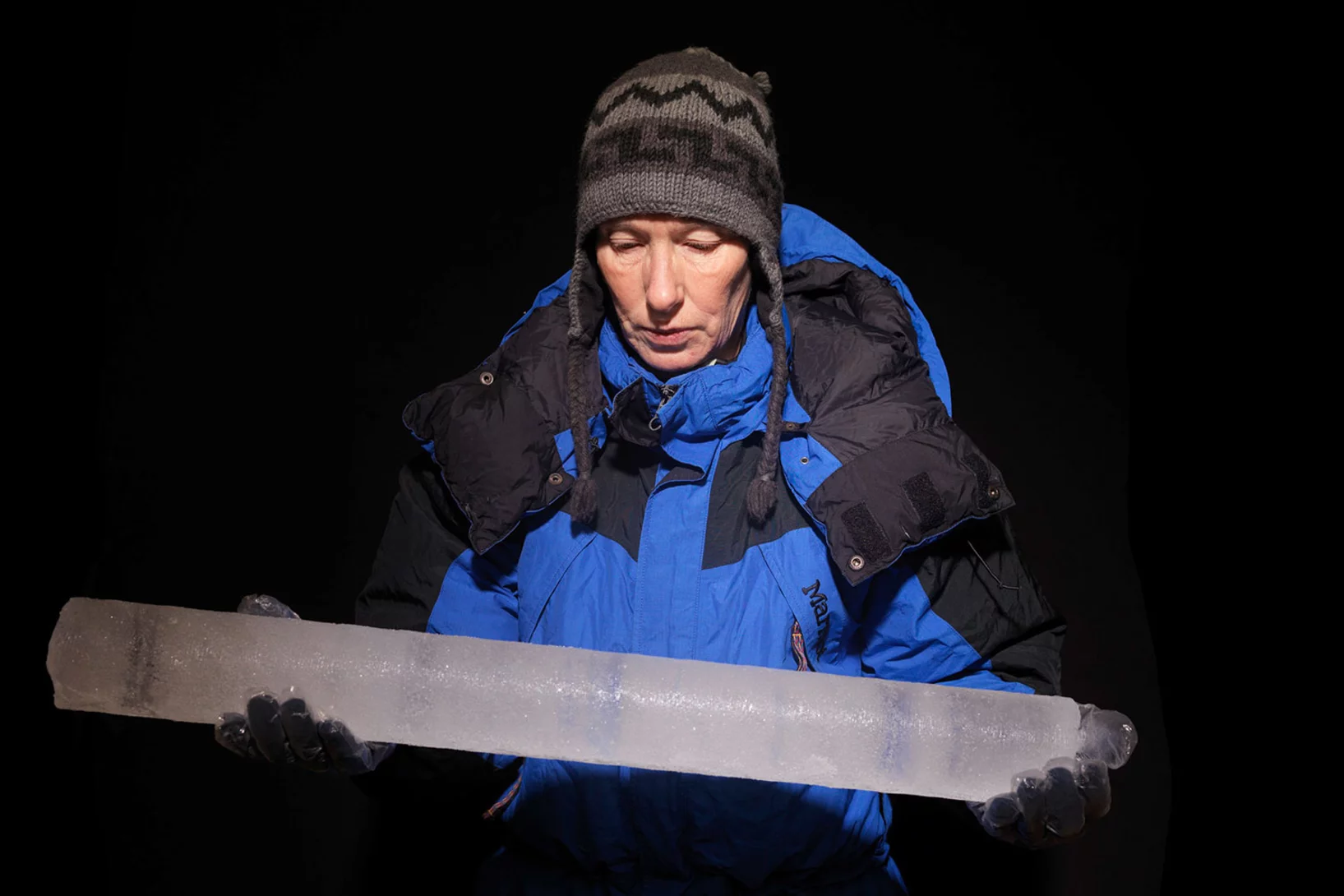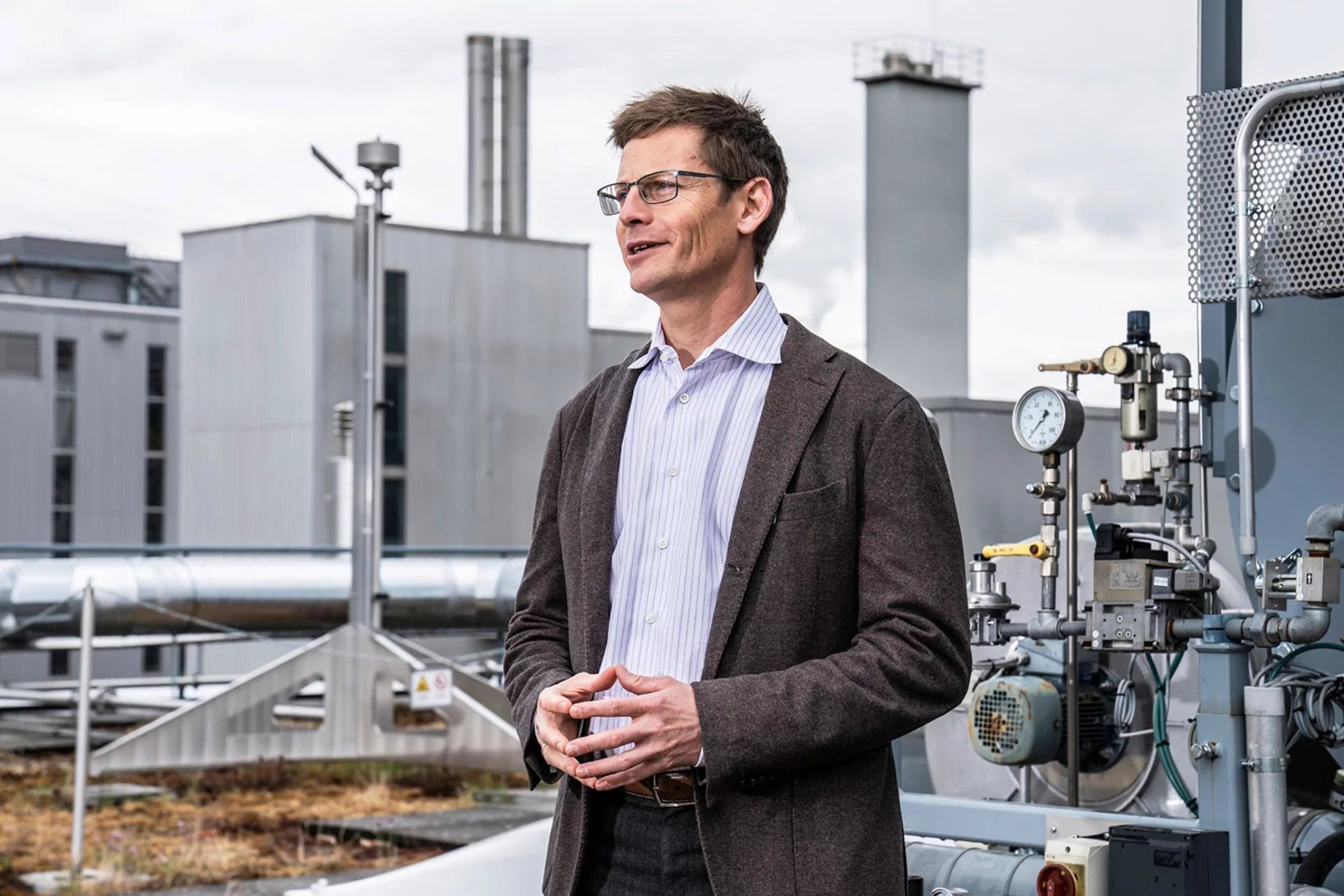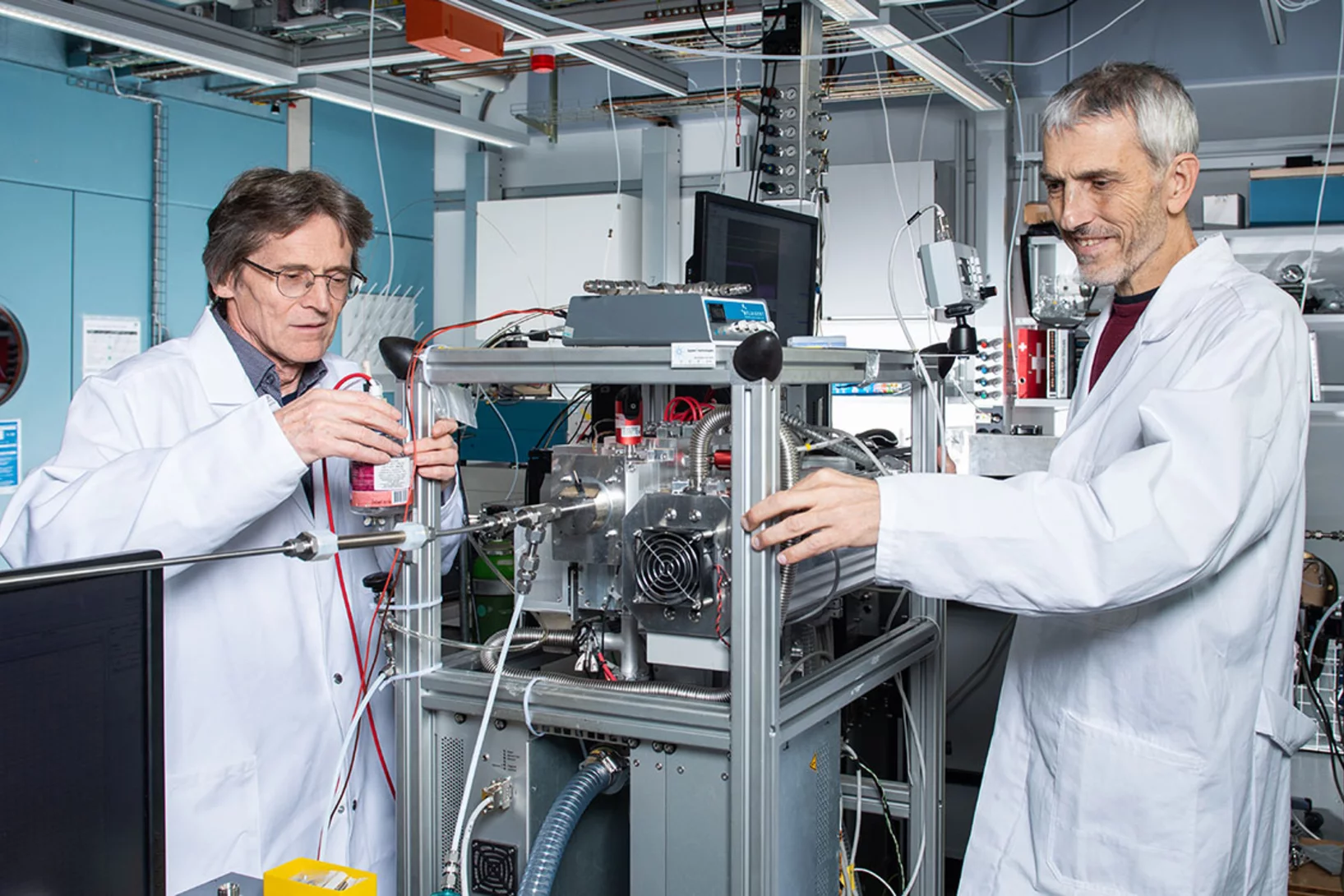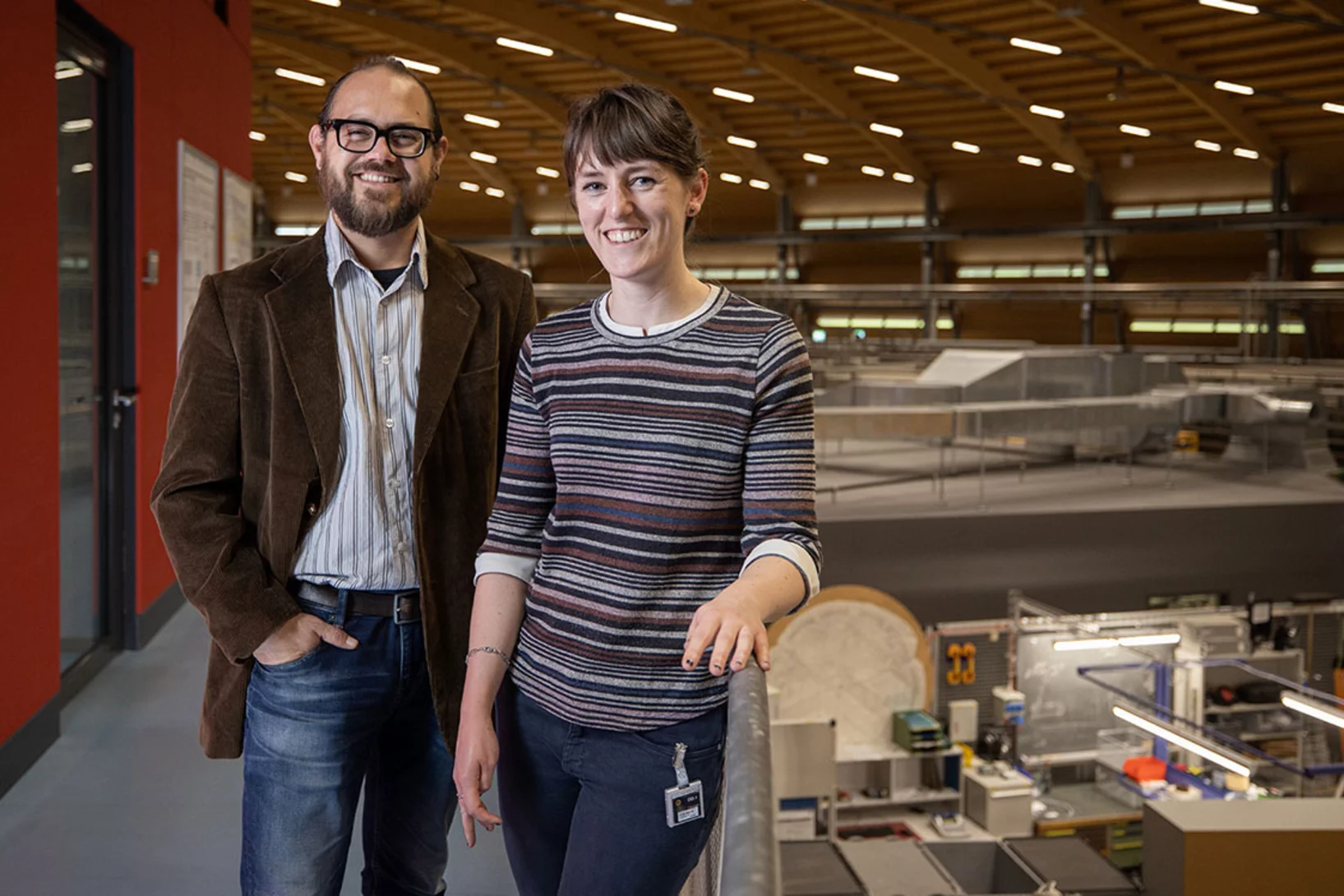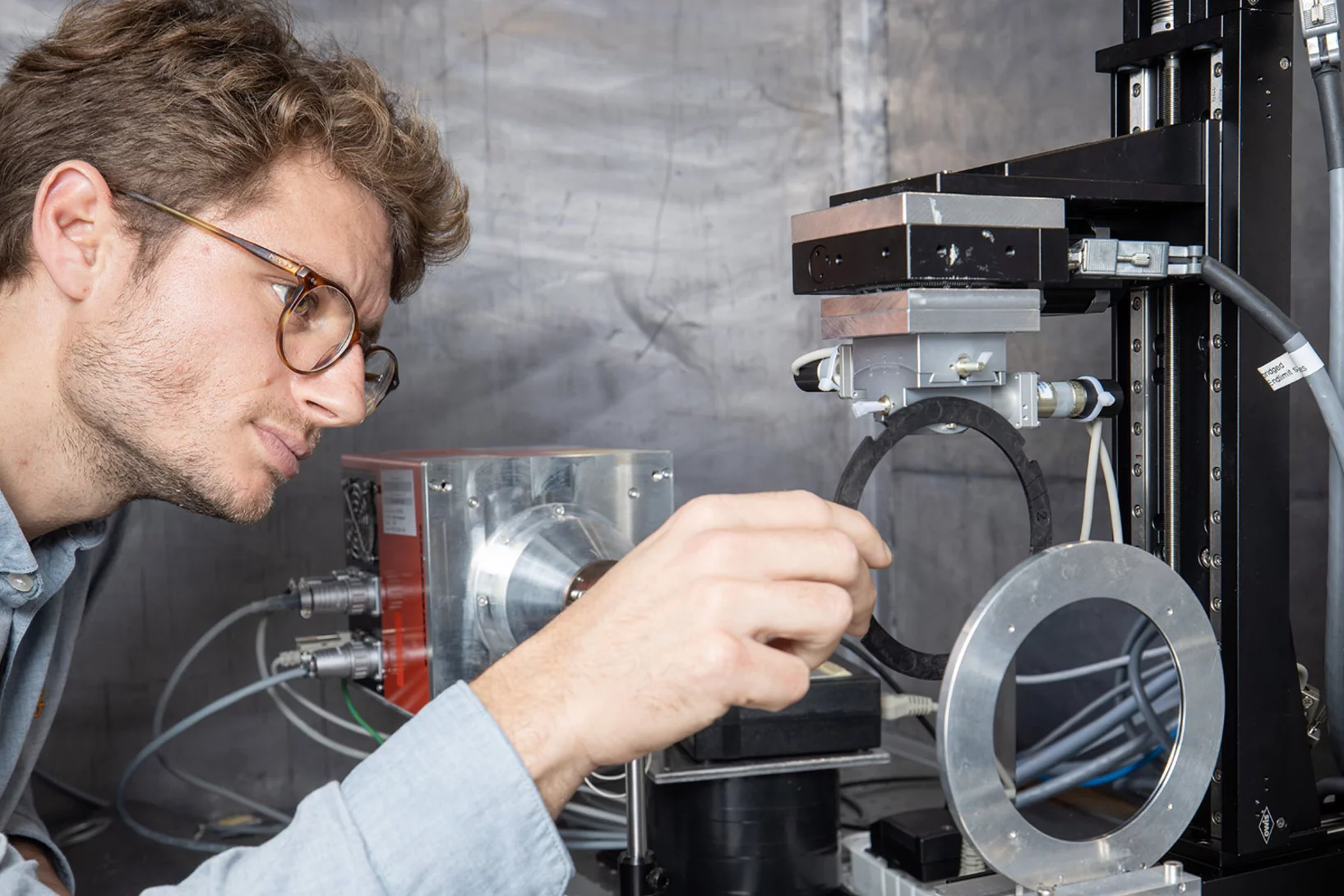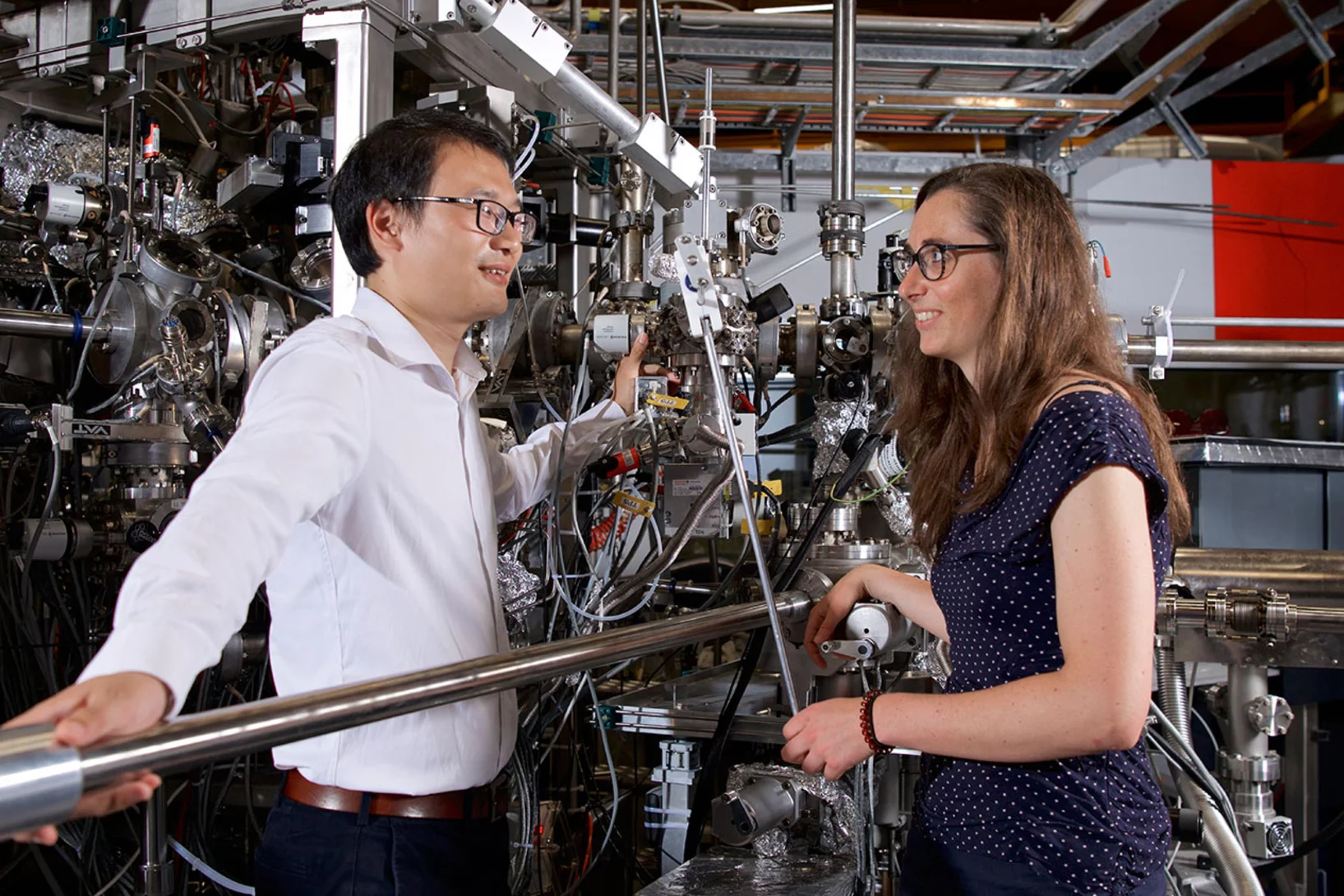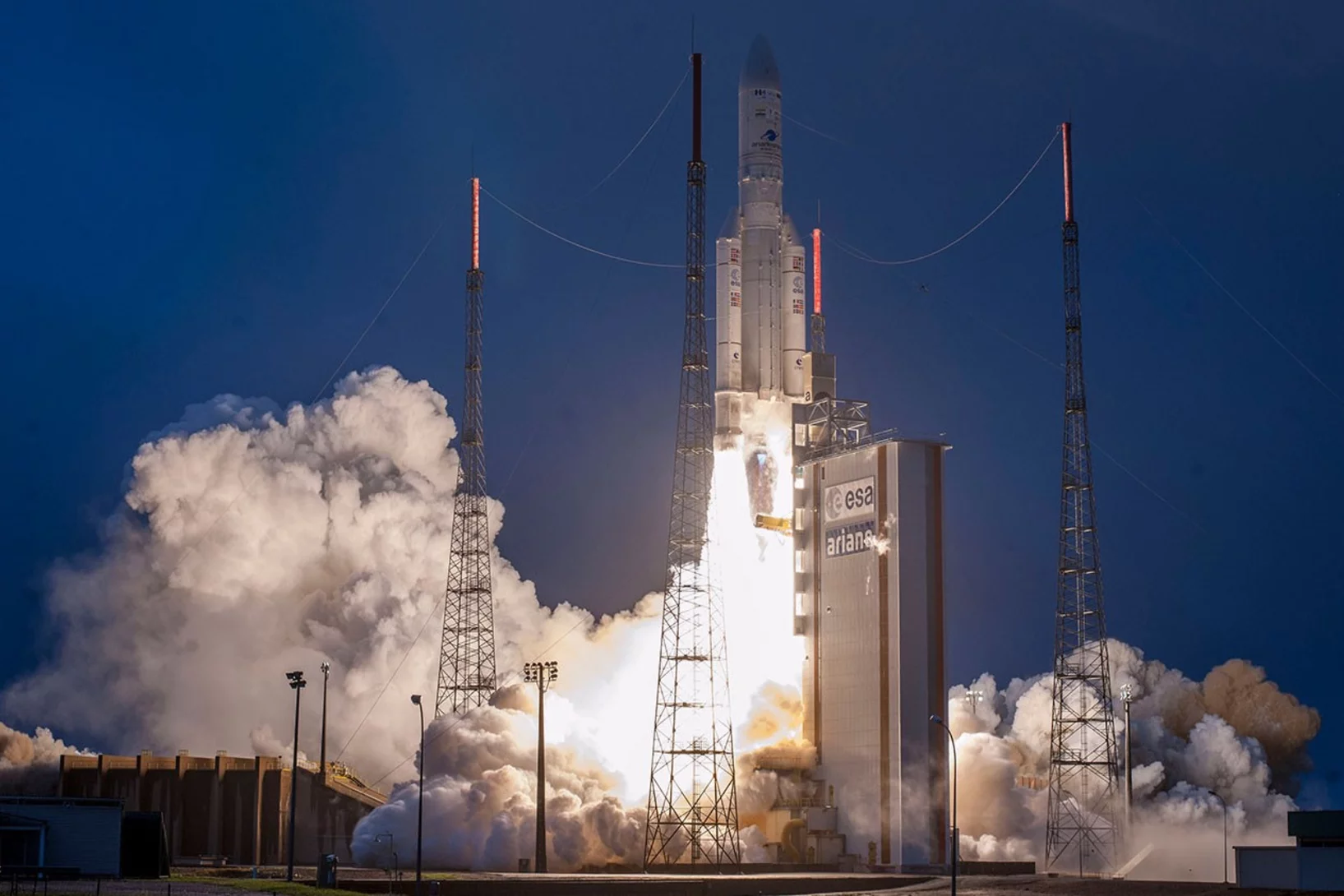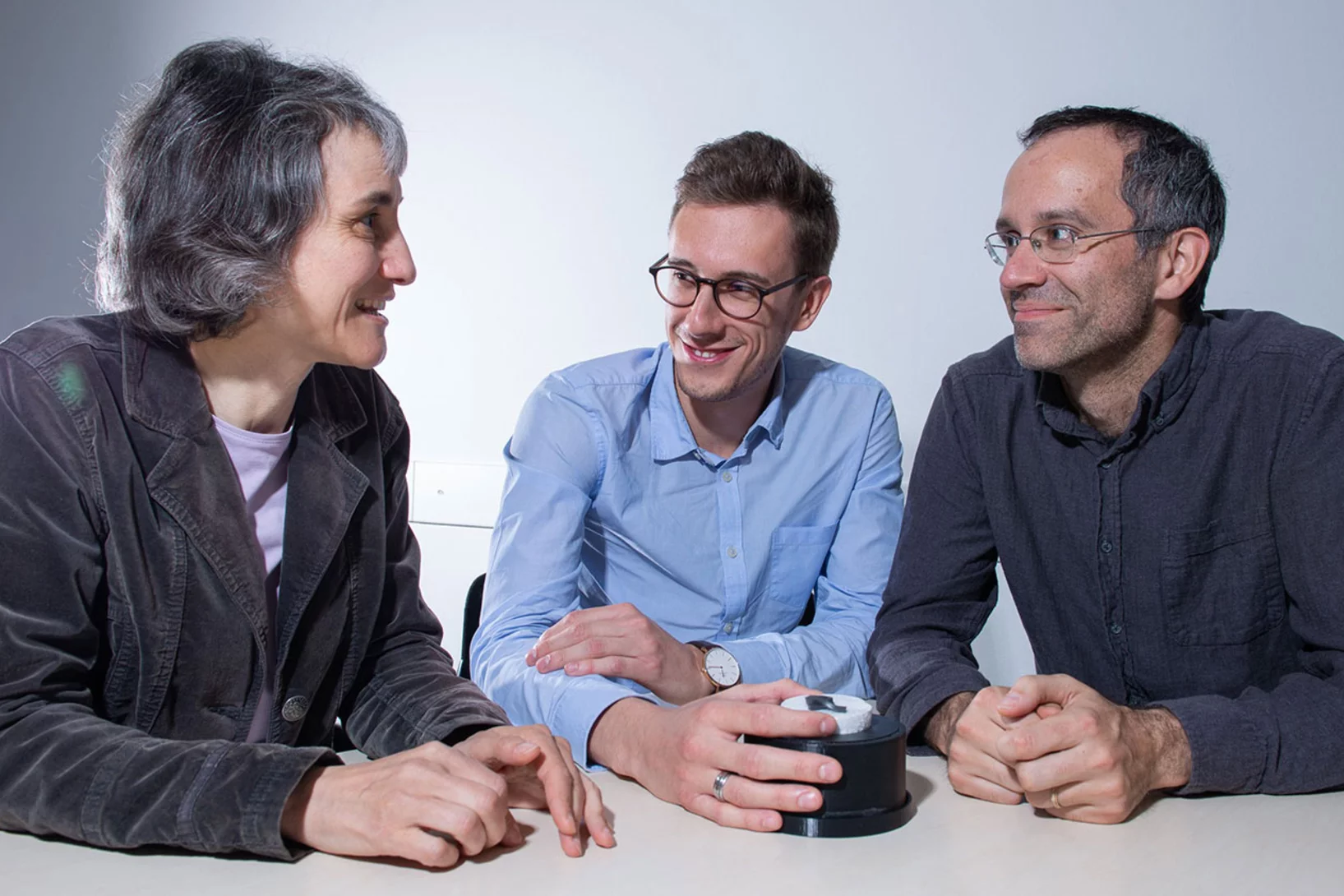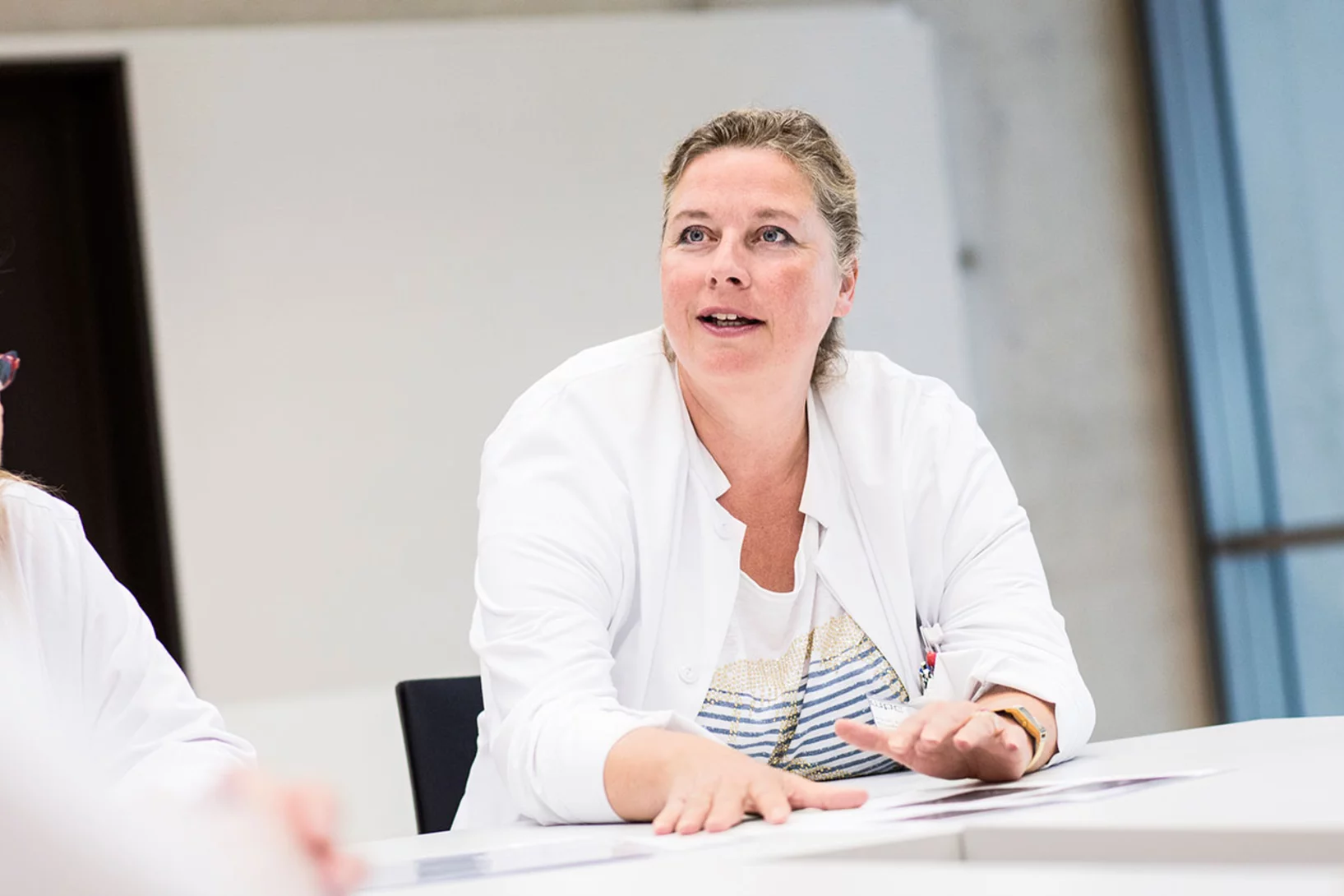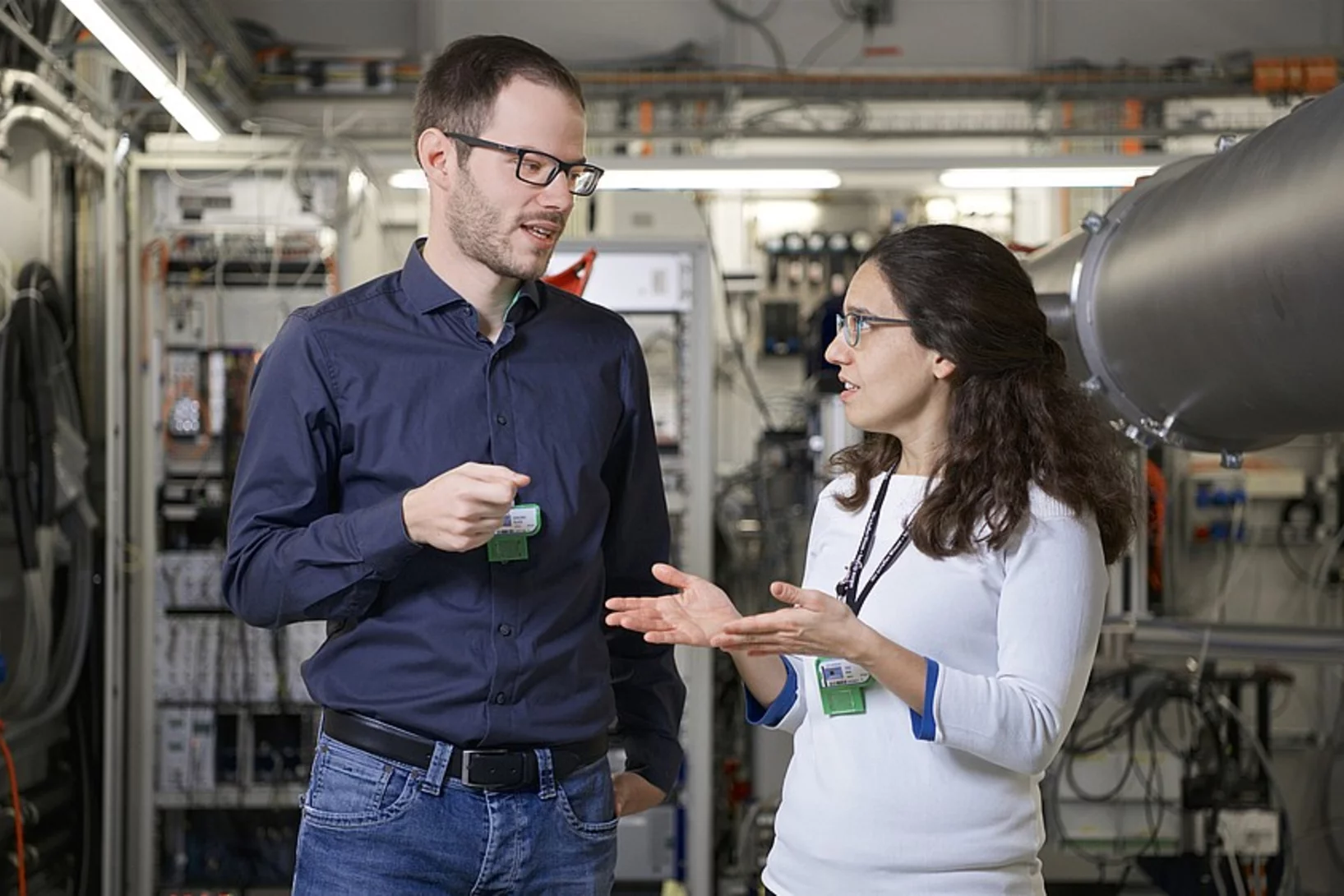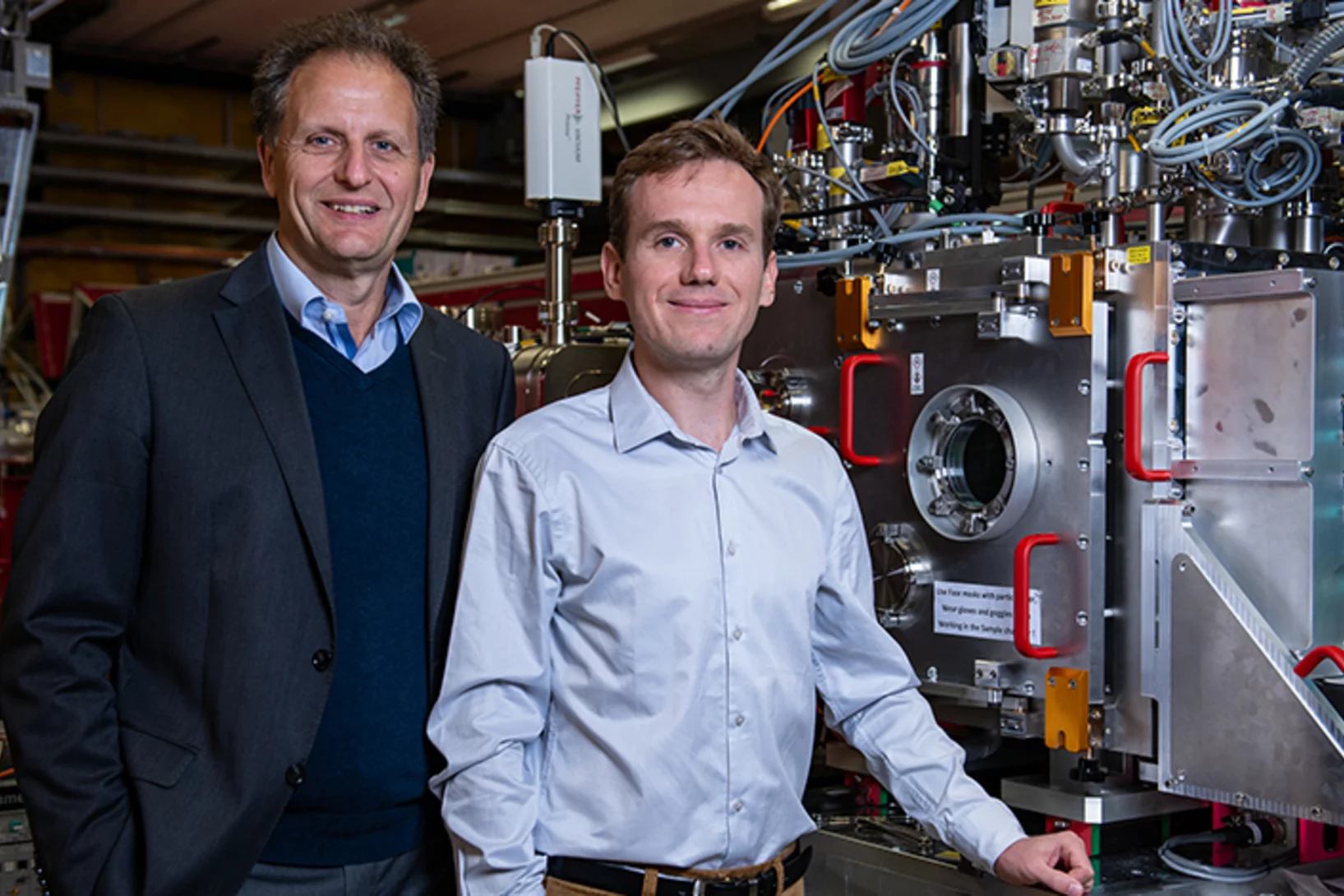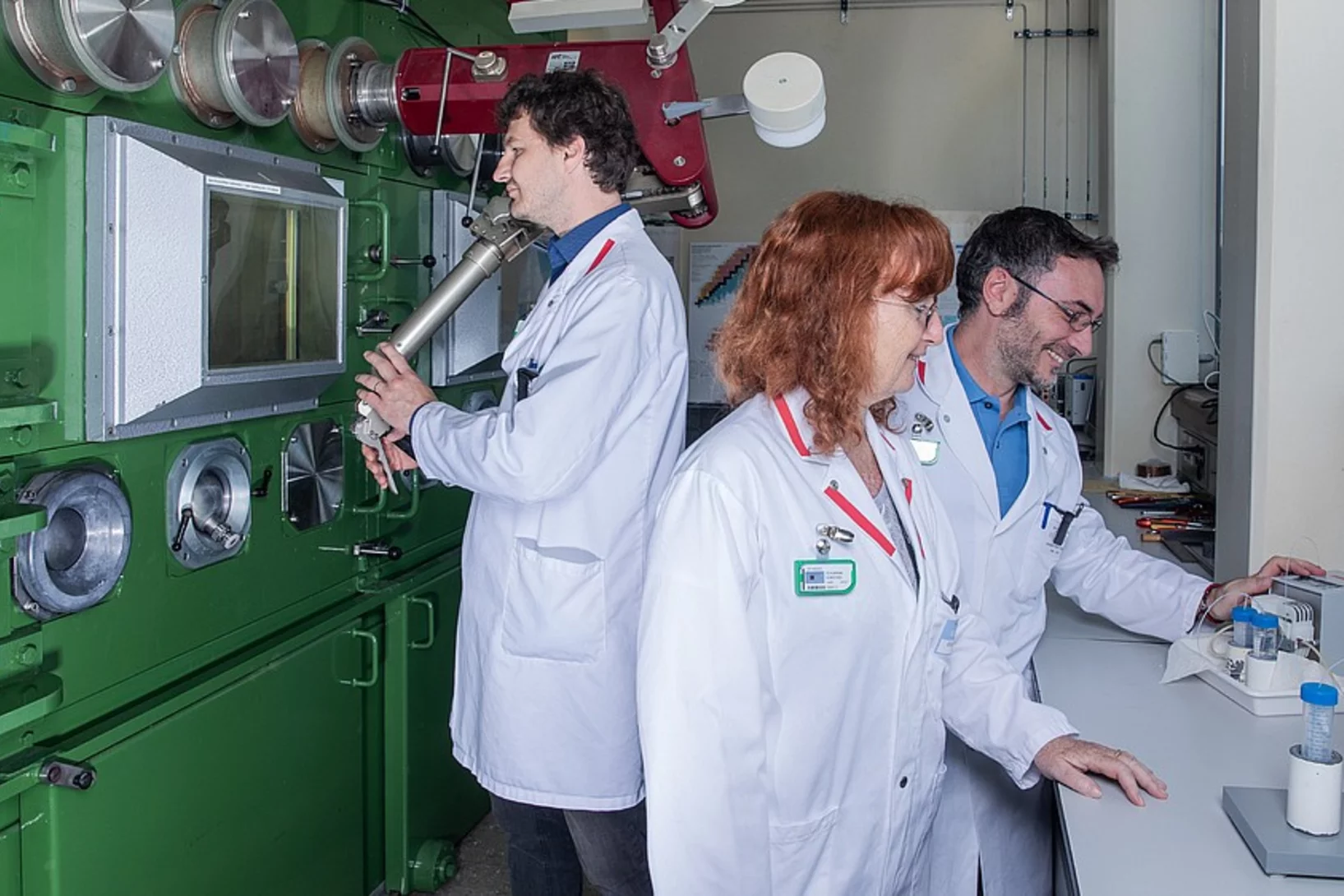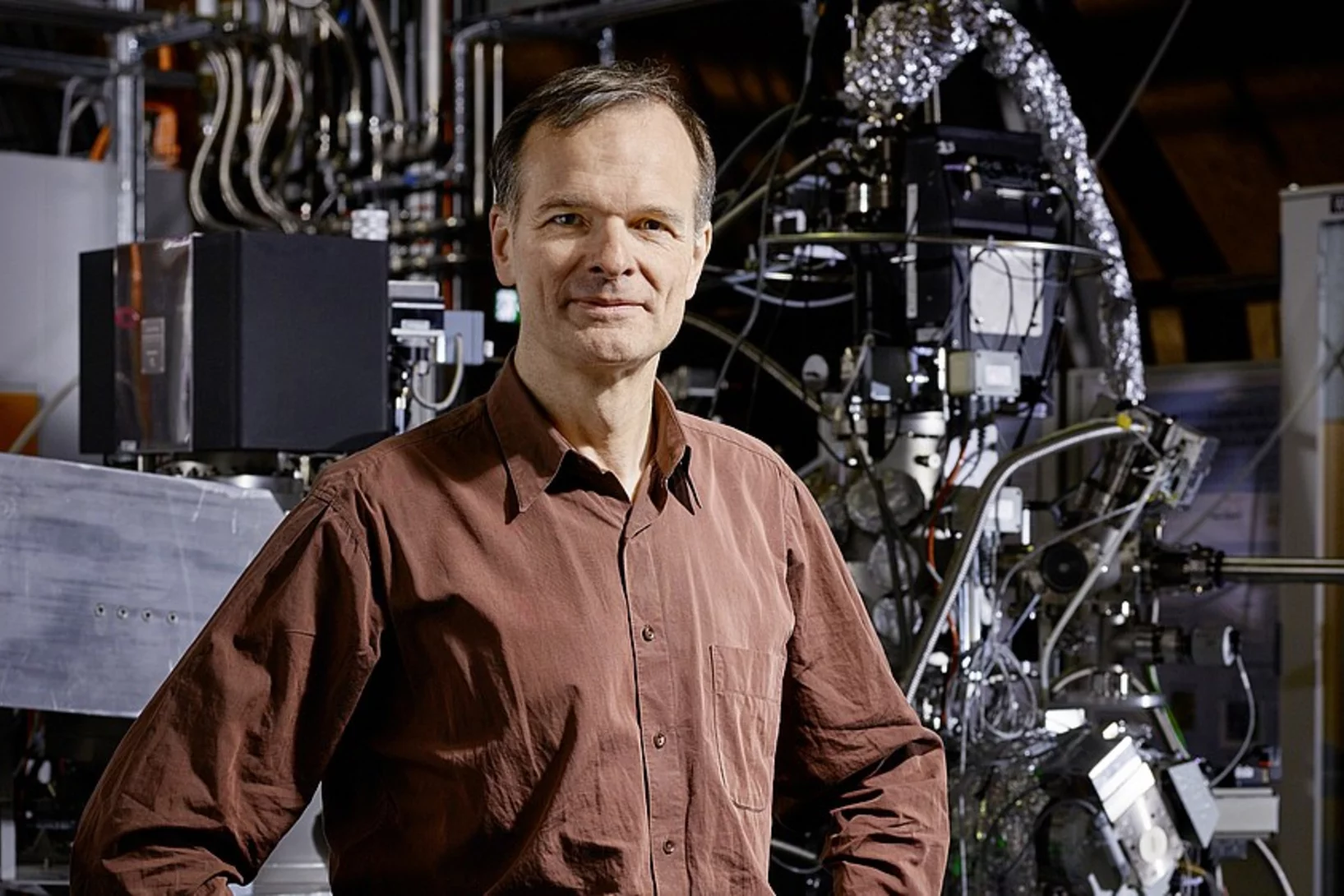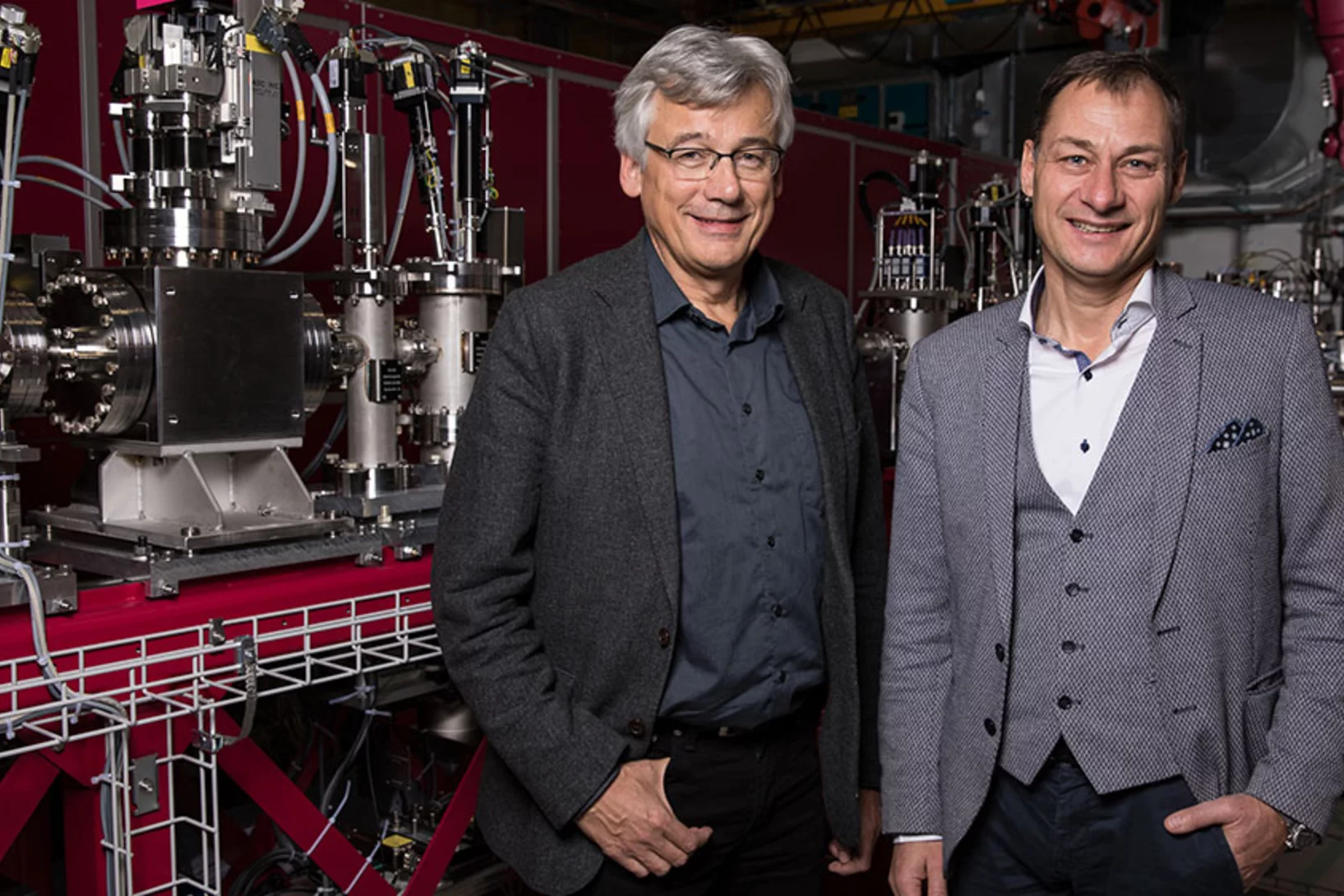A new generation of optogenetic tools for research and medicine
The European Research Council (ERC) is funding an interdisciplinary collaborative project with 10 million euros for the structural and biophysical analysis of selected photoreceptors and their development into "OptoGPCRs", light-controlled molecular switches with a wide range of applications in biology and medicine.
New technique for ultrafast tumour therapy
For the first time, researchers at the Centre for Proton Therapy at PSI have tested ultrafast, high-dose irradiation with protons. The new, experimental FLASH technique could revolutionise radiation therapy for cancer.
Nanostructures with a unique property
Researchers at the Paul Scherrer Institute PSI have for the first time identified special nano-vortices in a material: antiferromagnetic skyrmions.
Customising an electronic material
PSI scientists have investigated a material that could be suitable for future data storage applications. They have manipulated the crystalline structure of their sample while measuring how this affects the material’s magnetic and electronic properties.
Better catalysts for a sustainable bioeconomy
Zeolites are already indispensable additives in the chemical industry – researchers from PSI and ETH Zurich suggest ways to make them still more efficient.
The cold memory of the earth
Within the framework of an international project, researchers from the Paul Scherrer Institute PSI are helping to save a valuable environmental and climatic archive. During an expedition 4,000 metres above sea level on Grand Combin in the Alps, they are drilling ice cores from melting glaciers to preserve them in Antarctica.
«Forschung online erleben»: Mittendrin statt nur dabei
Erstmals Live-Rundgang durch eine Grossforschungsanlage per Video-Stream. Am 9. September haben Interessierte exklusiv die Möglichkeit, sich von Experten des PSI durch den neuen Freie-Elektronen-Röntgenlaser SwissFEL führen zu lassen und zu erfahren, welche Rätsel der Materie und der Natur sich damit lösen lassen.
Elucidating the mechanism of a light-driven sodium pump
Researchers at the Paul Scherrer Institute PSI have succeeded for the first time in recording a light-driven sodium pump from bacterial cells in action. The findings promise progress in developing new methods in neurobiology. The researchers used the new X-ray free-electron laser SwissFEL for their investigations.
Life cycle assessment of cars – new web tool helps consumers and researchers
Decision support for car buyers: Researchers at the Paul Scherrer Institute have developed a web tool called the Carculator that can be used to compare the environmental performance of passenger cars in detail.
Long-term developments of energy pricing and consumption in industry
Researchers from the Paul Scherrer Institute PSI, on behalf of a research project funded by the Swiss Federal Office of Energy (SFOE), have studied how energy consumption by Swiss industry develops depending on energy prices. One result: Price increases for energy usually affect energy consumption only over the long term.
In search of the lighting material of the future
At the Paul Scherrer Institute PSI, researchers have gained insights into a promising material for organic light-emitting diodes (OLEDs). This new understanding at the atomic level will help to develop new lighting materials that have higher light output and also are cost-efficient to manufacture.
Professor Dr. Christian Rüegg new Director of the Paul Scherrer Institute
The new director of the Paul Scherrer Institute has taken up office today. Christian Rüegg aims to further reinforce the leading role of PSI's large research facilities, and thus promote Switzerland as a location for research.
First-time direct proof of chemical reactions in particulates
Researchers at the Paul Scherrer Institute PSI have developed a new method to analyse particulate matter more precisely than ever before. With its help, they disproved an established doctrine: that molecules in aerosols undergo no further chemical transformations because they are enclosed in other particulate matter.
Tracking down the mystery of matter
At the ultracold neutron source at PSI, researchers have measured a property of the neutron more precisely than ever before: its electric dipole moment. That's because the search is still on for an explanation of why, after the Big Bang, there was more matter than antimatter.
Short film of a magnetic nano-vortex
Using a newly developed imaging method, researchers were able to visualise the magnetic structure inside a material with nanoscale resolution. They succeeded in creating a short "film" consisting of seven movie frames that shows, for the first time in 3D, how tiny vortices of the magnetisation deep within a material change over time.
Christian Rüegg appointed new Director of the Paul Scherrer Institute
On 27 November 2019, at the recommendation of the ETH Board, the Federal Council has appointed Christian Rüegg as the new director of the Paul Scherrer Institute PSI. The 43-year-old will take over from Thierry Strässle, who has headed the institute on an interim basis since the beginning of the year. Mr Rüegg is currently head of the Neutrons and Muons Division at the PSI. He will take up his new position on 1 April 2020.
A fast and precise look into fibre-reinforced composites
Researchers at the Paul Scherrer Institute PSI have developed a new process with which fibre-reinforced composite materials can be precisely X-rayed. This could help to develop better materials with novel properties.
On the way to intelligent microrobots
It is reminiscent of a paper bird made with the help of the Japanese folding art origami: a microrobot that uses the force of magnetic fields to move. In the future, such small machines could be used, for example, in medical operations.
From the Walkman to the electric car
Three researchers share this year's Nobel Prize in Chemistry. They are being honoured for their respective contributions to the development of lithium-ion batteries. Petr Novák of PSI likewise works in this area of research and has known the three laureates personally for decades. In an interview, he tells about sitting directly across from one of them at the crucial moment.
Preventing tumour metastasis
Researchers at the Paul Scherrer Institute PSI, together with colleagues from the pharmaceutical company F. Hoffmann-La Roche AG, have taken an important step towards the development of an active substance against the metastasis of certain cancers. Using the Swiss Light Source SLS, they deciphered the structure of a receptor that plays a crucial role in the migration of cancer cells.
Visualising strong magnetic fields with neutrons
For the first time, PSI researchers have used neutrons to visualise very strong magnetic fields that are up to one million times stronger than Earth's magnetic field. This now makes it possible to study magnets that are already installed in devices such as magnetic resonance tomography systems or alternators.
Weyl fermions discovered in another class of materials
A particular variety of particles, the so-called Weyl fermions, had previously only been detected in certain non-magnetic materials. But now researchers at PSI have experimentally proved their existence for the first time in a specific paramagnetic material.
Molecular energy machine as a movie star
Using the Swiss Light Source SLS, PSI researchers have recorded a molecular energy machine in action and thus revealed how energy production at cell membranes works. For this purpose, they developed a new investigative method that could make the analysis of cellular processes significantly more effective than before.
The energy system of the future and Power-to-X
Researchers at the Paul Scherrer Institute PSI analyse the potential of Power-to-X for Switzerland's energy supply and present their conclusions in a white paper. One finding: The costs for energy from Power-to-X could fall by up to one-third.
Molecular scissors stabilise the cell's cytoskeleton
Researchers at the Paul Scherrer Institute PSI have an important part of the regulatory cycle that is involved in the formation and degradation of the cytoskeleton. Among other things, they have watched molecular scissors at work.
PSI imaging helps with rocket launches
PSI researchers are helping the European space program: Their neutron imaging serves to ensure the quality of critical components for rocket launches.
New material with magnetic shape memory
PSI researchers have developed a material whose shape memory is activated through magnetism. Application areas for this new kind of composite material include, for example, medicine, space flight, electronics, and robotics.
New material also reveals new quasiparticles
Researchers at PSI have investigated a novel crystalline material at the Swiss Light Source SLS that exhibits electronic properties never seen before. Among other things, they were able to detect a new type of quasiparticle: so-called Rarita-Schwinger fermions.
Bringing information into the cell
Researchers at the Paul Scherrer Institute PSI have elucidated an important part of a siganalling pathway that transmits information through the cell membrane into the interior of a cell. This exists in all mammals and plays an important role, among other things, in the regulation of the heartbeat. The new findings could lead to new therapies.
A compass pointing West
Researchers at PSI have discovered a new phenomenon of magnetism with the help of the Swiss Light Source SLS. Certain groups of atoms behave like a compass pointing West. This could make computers much more powerful.
Children are her passion
At PSI, Beate Timmermann built up a programme providing proton therapy for children with cancer at the same time she was raising her own son. Today she is head of the Clinic for Particle Therapy at the West German Proton Therapy Centre in Essen (WPE) and is considered one of the most accomplished experts in this field.
Virtual lens improves X-ray microscopy
A method developed by PSI researchers makes X-ray images of materials even better. The researchers took a number of individual images while moving an optical lens. From these, with the help of computer algorithms, they generated one overall image.
Measurement of five flashes from the depths of the universe
A PSI-developed detector called POLAR has collected data on so-called gamma-ray bursts from a space station. This is now helping to better understand these extremely high-energy flashes of light.
EU grants 14 million to Swiss Researchers
A team with three researchers from the ETH Domain has been awarded a prestigious EU grant. Today, they received the contract signed by the EU confirming the extraordinary 14 million euros funding. With it, they will investigate quantum effects which could become the backbone of future electronics.
Making the impossible possible
Use of multiferroic materials promises more energy-efficient computers because in these, an electric field would suffice to achieve magnetic data storage. Researchers at PSI have now made such a material suitable for computer operating temperatures.
Why the Little Ice Age ended in the middle of the 19th century
In the first half of the 19th century, a series of large volcanic eruptions in the tropics led to a temporary global cooling of Earth's climate. That Alpine glaciers grew and subsequently receded again during the final phase of the so-called Little Ice Age was due to a natural process. This has now been proven by PSI researchers on the basis of ice cores.
This time, it's all bio: SwissFEL makes protein structures visible
For the development of new medicinal agents, accurate knowledge of proteins is crucial. In a pilot experiment, researchers have now, for the first time, used the X-ray free-electron laser SwissFEL of PSI for the examination of protein crystals.
Material from PSI helps to check inconsistencies in the Big Bang theory
Shortly after the Big Bang, radioactive Beryllium-7 atoms were formed, which today, throughout the universe, they have long since decayed. A sample of beryllium-7 artificially produced at PSI has now helped researchers to better understand the first minutes of the universe.
On the path to new high-performance transistors
The electronics industry expects a novel high-performance transistor made of gallium nitride to offer considerable advantages over present-day high-frequency transistors. Yet many fundamental properties of the material remain unknown. Now, for the first time, researchers at the Paul Scherrer Institute PSI have observed electrons while they were flowing in this promising transistor. For that they used one of the world's best sources of soft X-rays at PSI's Swiss Light Source SLS.
Cleaner emissions thanks to sponge-like structure
PSI researchers have developed a new catalytic converter for cleaning emissions from natural gas engines. It is very active even at low temperatures and remains that way over a long period of time. This allows natural gas to be burned in a cleaner, more climate-friendly way. Thus natural gas and biogas become more attractive as substitutes for petroleum products – for example, as fuel for cars.
Biological light sensor filmed in action
Using X-ray laser technology, a team led by researchers of the Paul Scherrer Institute PSI has recorded one of the fastest processes in biology. In doing so, they produced a molecular movie that reveals how the light sensor retinal is activated in a protein molecule. Such reactions occur in numerous organisms. The movie shows for the first time how a protein efficiently controls the reaction of the embedded light sensor.
Imaging the inside of injection needles with neutrons
Researchers from the Paul Scherrer Institute PSI, the University of Basel and Roche have used neutron imaging to investigate why cool storage is crucial for syringes pre-filled with a liquid medication.
Light for biomolecules and super-fast processes
The 16th of May is the International Day of Light. The research carried out with light at PSI enables advances in biology and pharmacology and also promotes the development of new materials for data storage and new technologies for personalised medicine.
Opening: Advanced technology against cancer
With proton therapy, certain tumours can be irradiated with exceptional precision – while, the surrounding healthy tissue is optimally protected. In Switzerland, this kind of radiation therapy is only possible at PSI. In a joint project with the University Hospital Zurich and the University of Zurich, PSI has expanded its capacity with a state-of-the-art treatment facility: the new, 270-ton Gantry 3.
Cleaner diesel emissions
PSI researchers have found out why it is harder to control the noxious nitrogen oxides in diesel exhaust at low temperatures – and how, in the future, emissions can be cleaned more efficiently depending on the temperature.
Imaging at Paul Scherrer Intitute helps to increase production at ABB site in Aargau
The ABB facility in Wettingen got practical recommendations on increasing production of ceramic components. Researchers at the Paul Scherrer Institute PSI examined the components by means of neutron imaging. With the help of these images, ABB employees were able to see where there is still potential for process optimisation. This feasibility study was funded by the Hightech Zentrum Aargau.
Power from nanomagnets
Oles Sendetskyi, winner of a Founder Fellowship at the Paul Scherrer Institute PSI, wants to use polarity reversal in nanomagnets to develop a sustainable power source for small devices.
First experiment at SwissFEL carried out successfully
The years of careful planning and construction have paid off: At the newest large-scale research facility of the Paul Scherrer Institute PSI – the X-ray free-electron laser SwissFEL – the first experiment has been carried out successfully. With that, two goals have been achieved: First, a new scientific result is already expected. Second, the interaction of the many individual components of the highly complex facility is being optimised.






